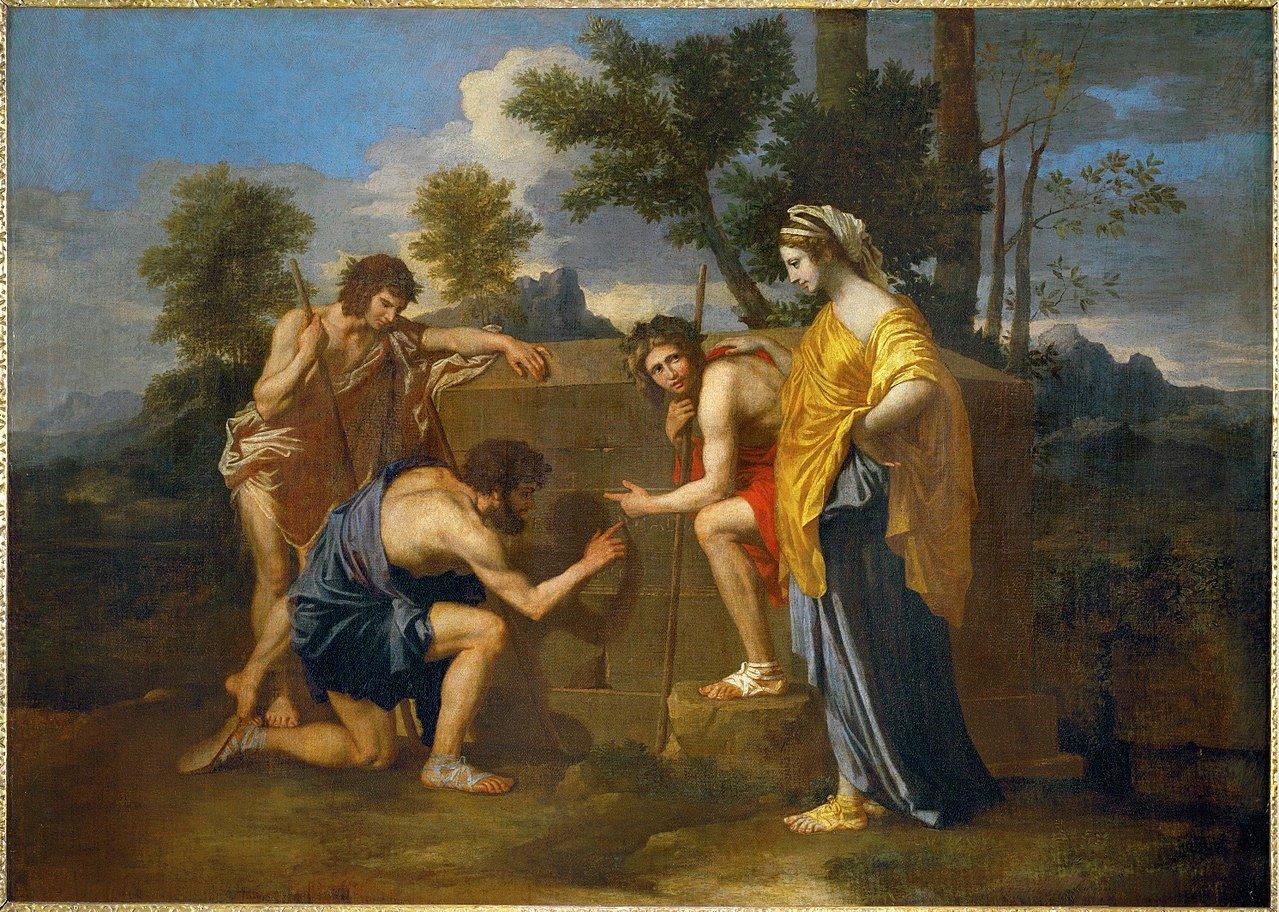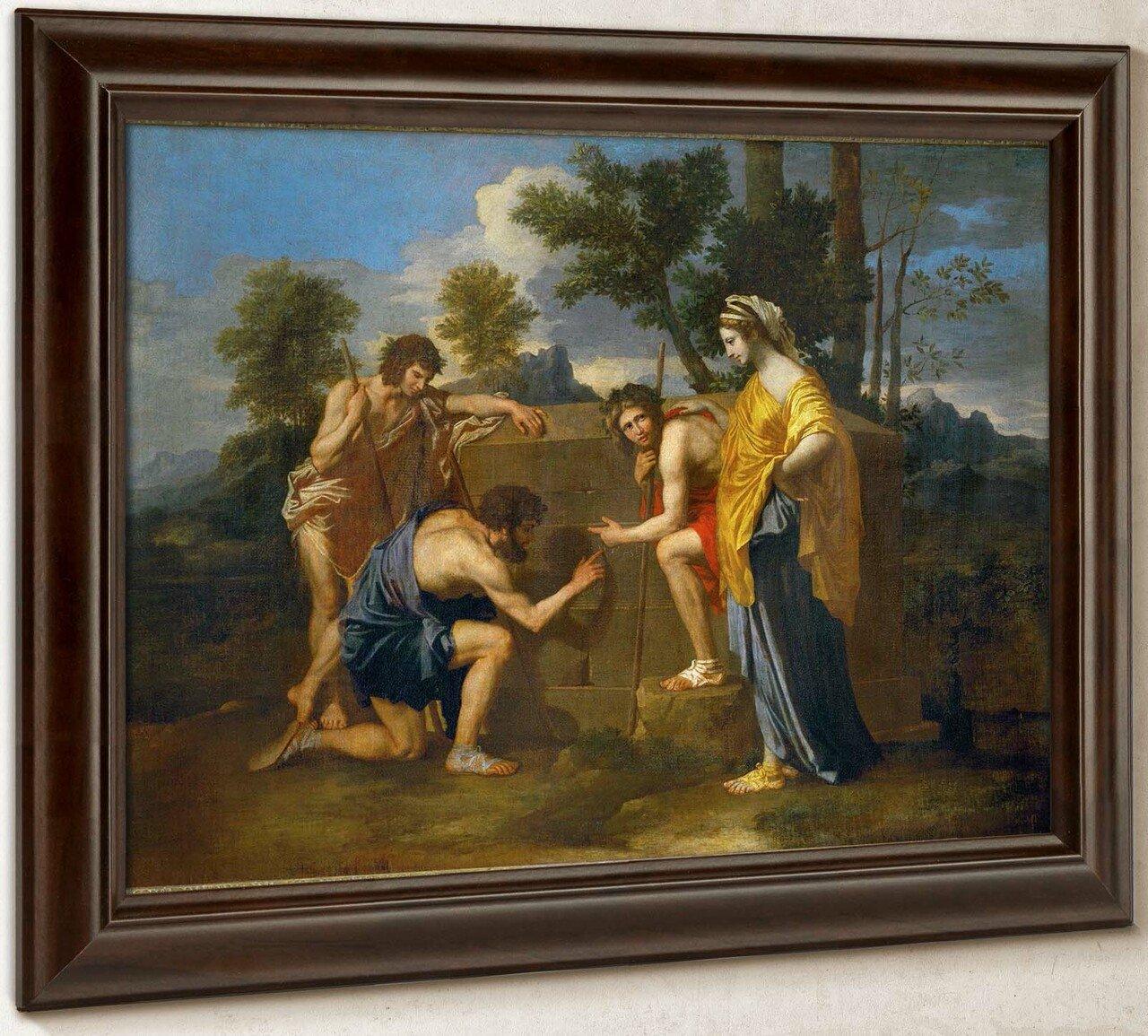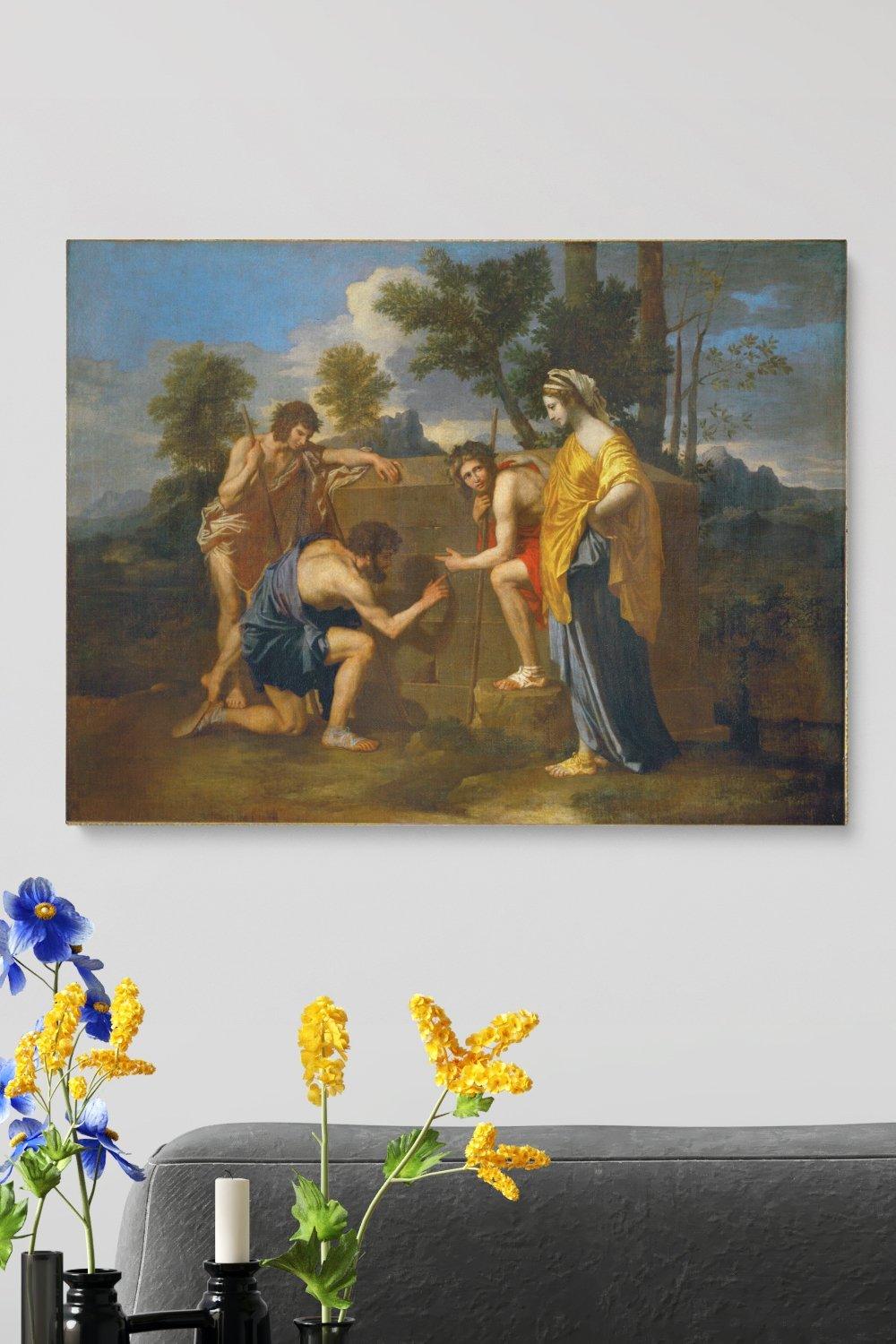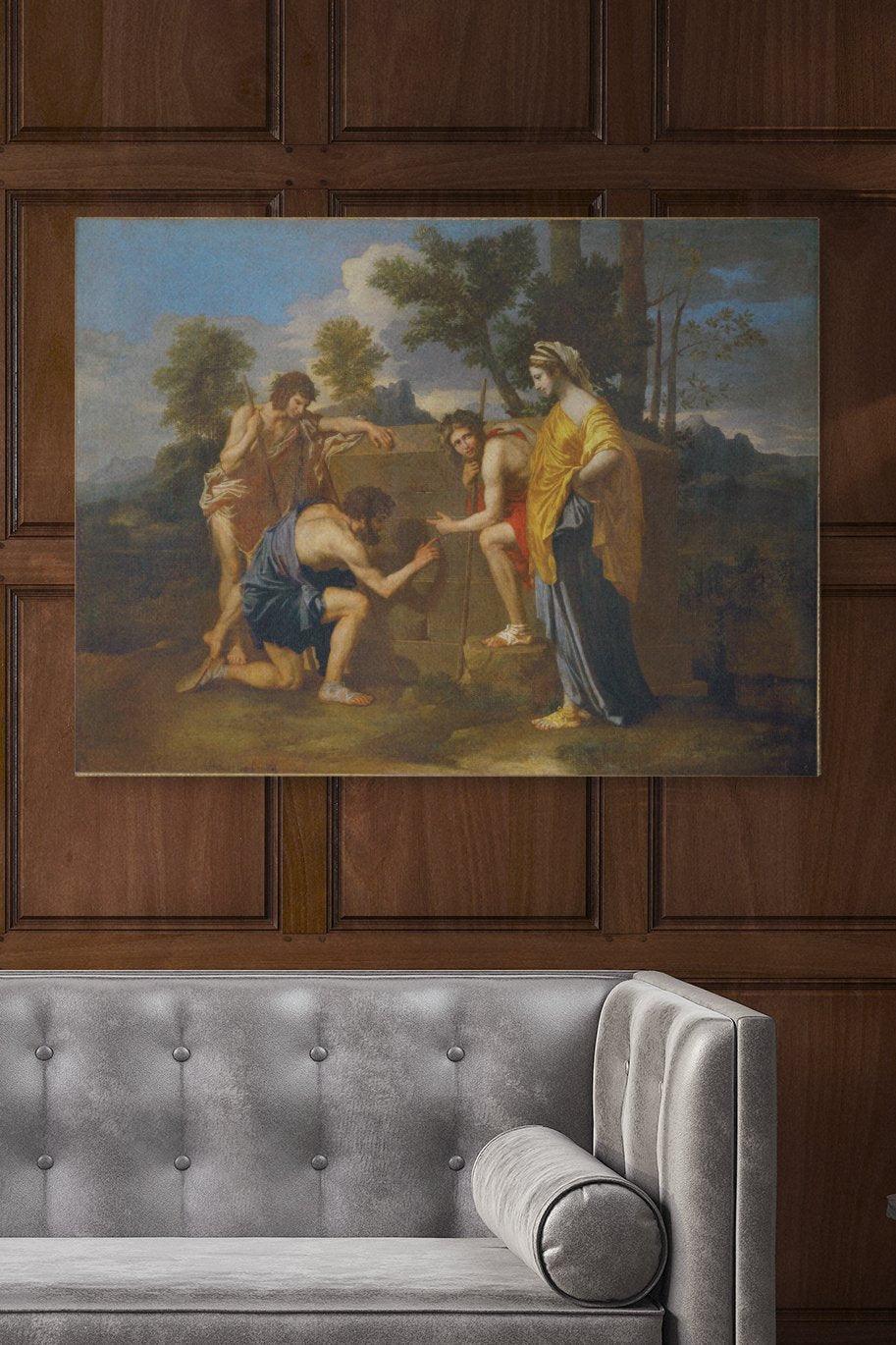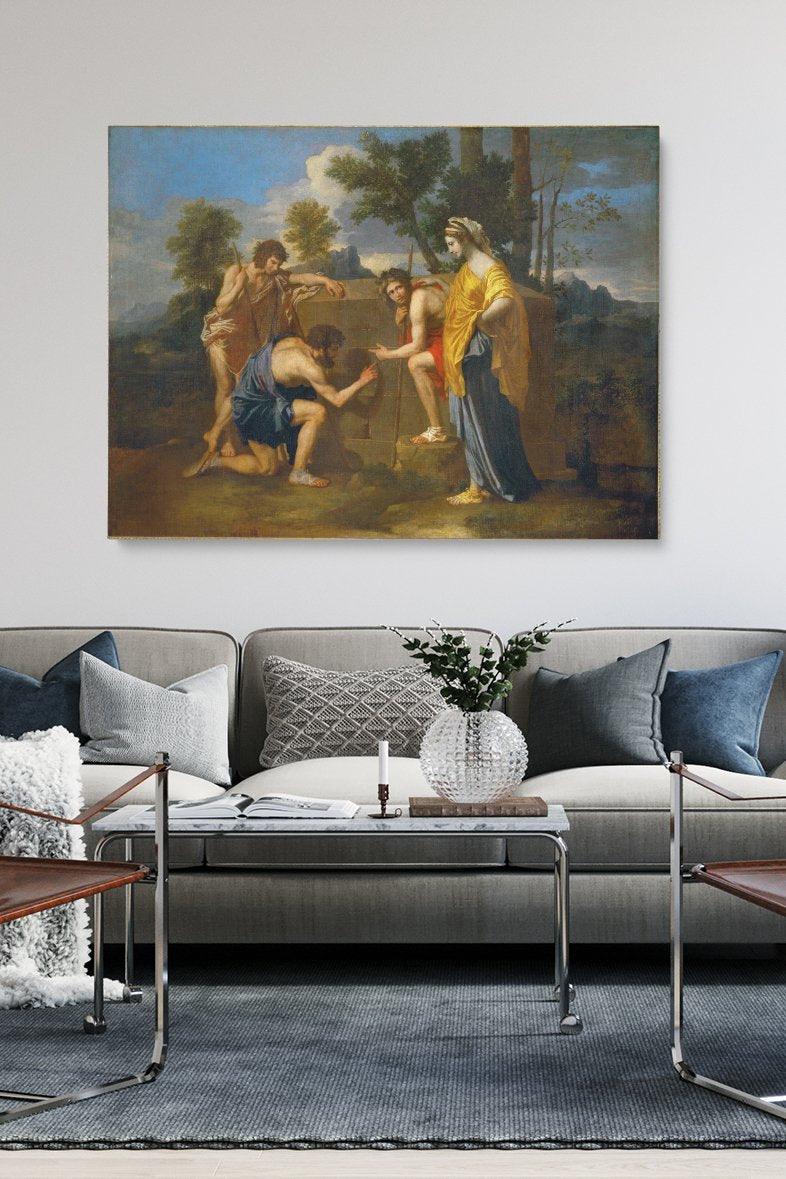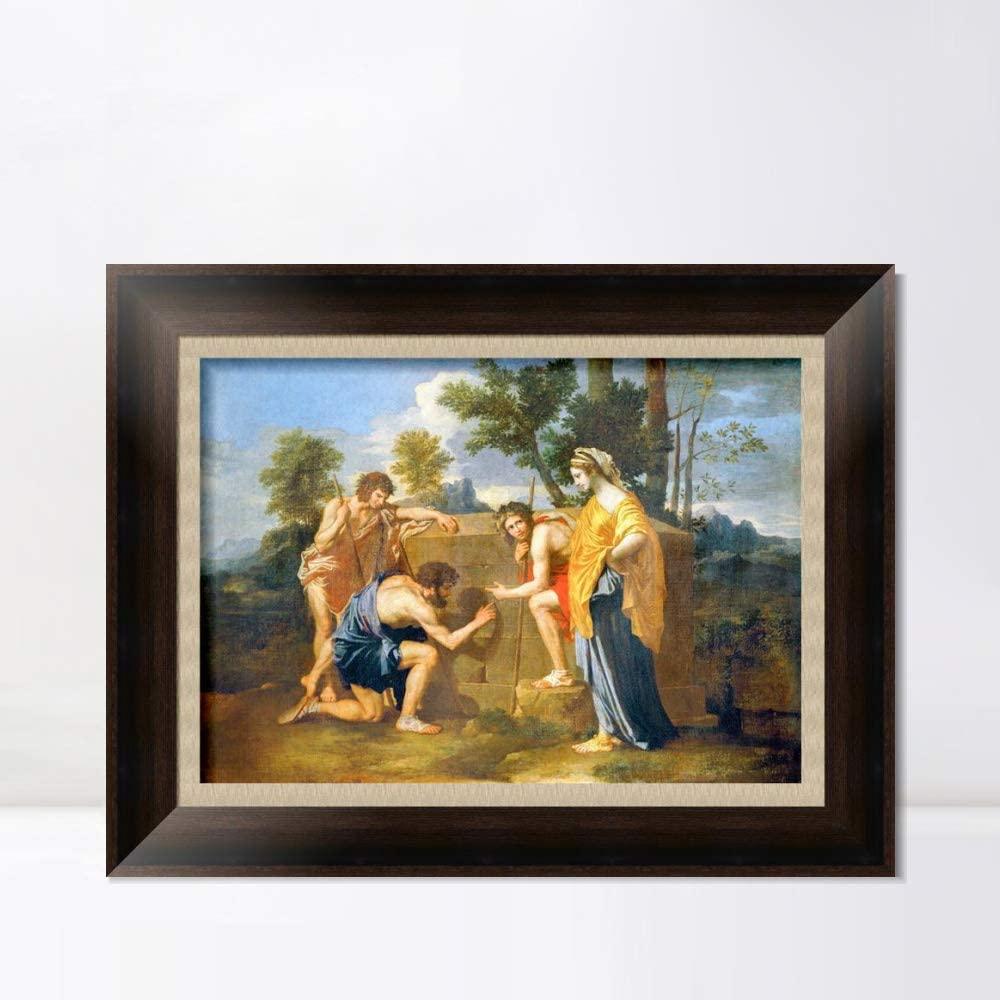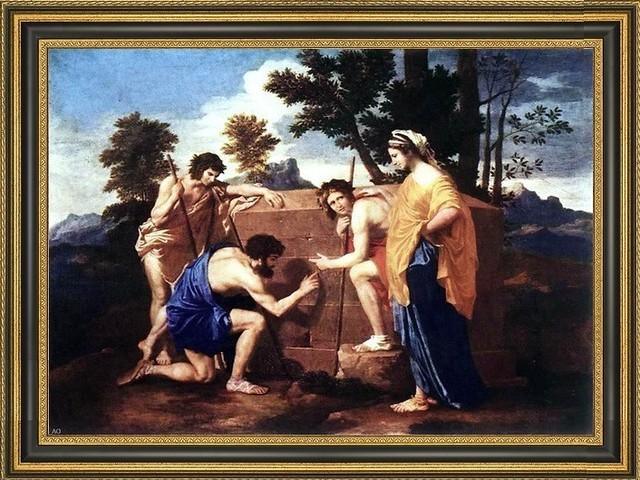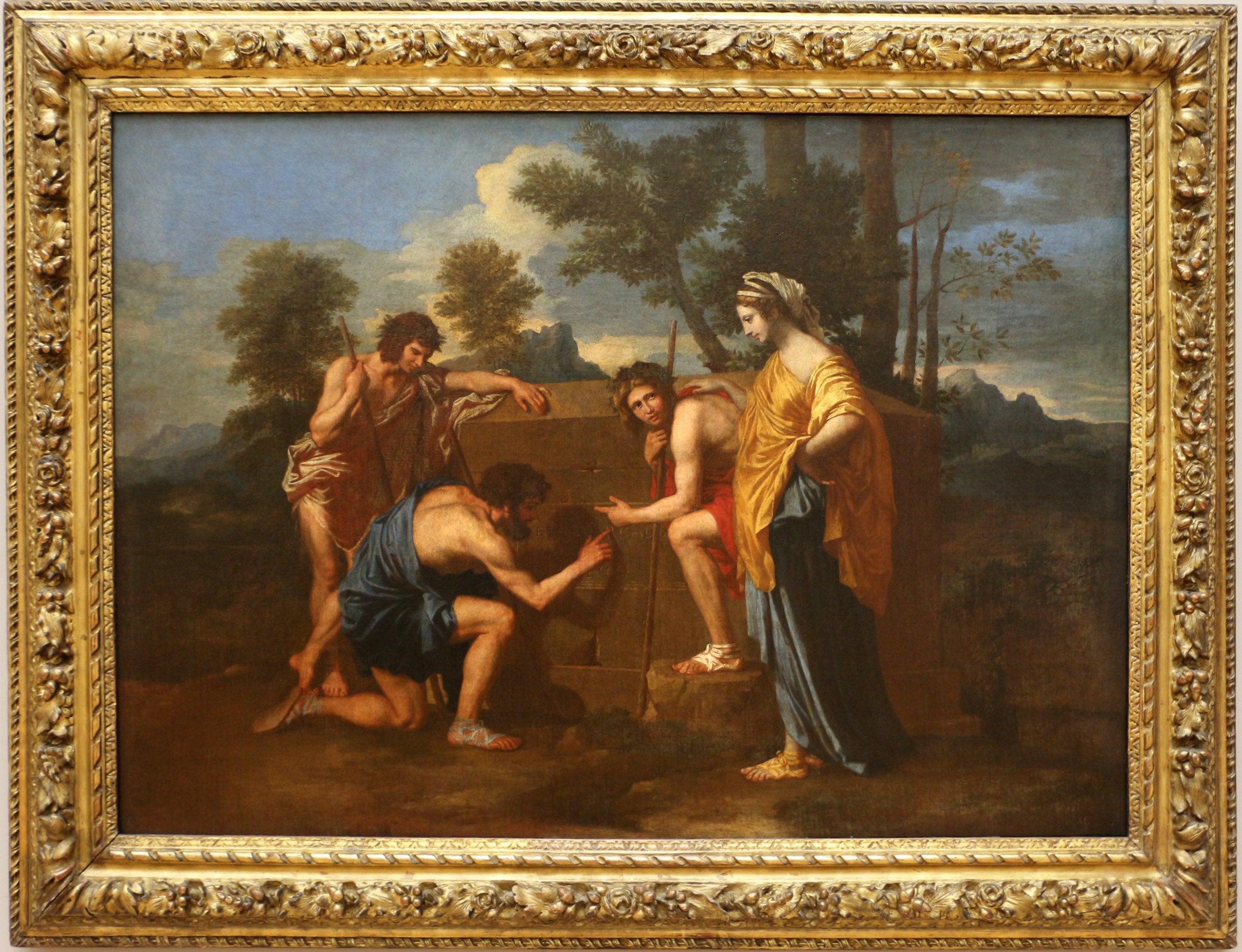Description
Poussin painted two versions of Et in Arcadia Ego: the one in the Louvre and an earlier version, made in 1627, which is held in Chatsworth House, England. Poussin, too, would have been familiar with the 1618-22 painting of the same subject by Guercino (1618-22, Galleria Nazionale d'Arte Antica, Rome).
This painting, by the French artist Nicolas Poussin, shows a melancholy contemplation of the presence of death in utopia. In it, four figures are seen gathered around a tomb. They point to an inscription carved into the stone. The inscription reads "Et in Arcadia Ego", which can be translated as "Even in Arcadia, I am here".
The setting is a landscape with trees in the leaf and the sun shining on groves and mountains. Note that there are no buildings in the image. The only construction is the stone tomb around which the four figures are gathered.
The way the artist has rendered the scene can tell us a lot about the setting. The four figures are arranged in a harmonious pattern: notice how the two outer figures are standing, their postures mirroring each other, while the two inner figures are both crouched with their knees bent. The artist has deliberately painted this symmetrical arrangement not only to create a visually pleasing composition, but also to suggest something else about the scene we are looking at. Like classical architecture, the symmetry of the parts is supposed to offer the viewer a heightened sense of order and harmony.
And so we have come to understand something about the installation of the painting: a place called Arcadia.
Arcadia was an area in the central Peloponnese region of ancient Greece, a largely mountainous region, with rugged peaks and deep gorges. In ancient Greek mythology, Arcadia was the residence of Pan, the god of nature and of shepherds and flocks. The setting of rugged mountains was thought to inspire rustic music and impromptu dances in the company of the nymphs.
The idea of Arcadia has given rise to the pastoral notion of a simple life and is reflected in the fact that Arcadia came to represent paradise in Roman poetry and then later in Renaissance literature. Think of it as the golden age of a more peaceful way of life.
In particular, we have the Roman poets Ovid and Virgil to thank for transforming the harsh reality of Arcadia into a softer, even utopian place of salvation.
Virgil in particular, in his Eclogues, idealized the setting by inventing the image of lush greenery, "of cool springs, mead and grove" where lovers can live in pleasant bliss, untouched by the violence of the real world. It is a place where shepherds roam singing love songs and untamed nymphs roam the forests and rivers.
The inscription Et in Arcadia ego, "I too once lived in Arcadia", could also be understood in the present tense, the poignant message that even in the idyllic setting of Arcadia, the present moment will inevitably pass and death will come to us all.
An art historian who examined in detail the possible meaning of the inscription was Erwin Panofsky. Panofsky reminds us that for Renaissance artists and poets, Arcadia was an object of nostalgia. It was not only a distant place, but, fundamentally, a distant time. "It is a hopelessly lost kingdom, seen through a veil of haunting melancholy," Panofsky wrote.
On this reading, Poussin's painting is seen less as a dramatic revelation of the presence of death even in utopia, but as a more thoughtful contemplation of a blissful past. It combines the tradition of the memento mori—the symbolic reminder of the inevitability of death—with a more nostalgic sense of the very loss of an ideal. “I also lived in Arcadia where you now live; I also enjoyed the pleasures you now enjoy. And now I'm dead and gone."
Poussin incorporated deliberate errors in the painting, in the use of shadows. The second shepherd's right hand points to the shadow of his hand touching the shadow of his head, which is unreal. To accomplish this, your finger must physically touch your head. The hand in the position shown should cast a shadow that nearly "touches" the third shepherd's knee. Shadows are impossible in that context. Standing on the Pontils bridge, looking across the ravine towards the old tomb, one is looking south. Even in Pousin's day, shadows did not fall on the north face of the tomb. Pousin has left a clue in the painting that experts at the Louvre Museum missed.

